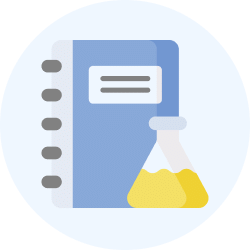Heat Class 7 Worksheet Science Chapter 3
Q.1. True/False
(i) Temperature of boiling water cannot be measured by a clinical thermometer.
(ii) Medium is required for transfer of heat by the process of radiation.
(iii) Clothes of dark colours absorb heat better than clothes of light colours.
(iv) Light coloured clothes are preferred during summer.
(v) We should hold the thermometer by the bulb while holding it.
(vi) The bulb of laboratory thermometer should not touch the bottom or the sides of the container.
Q.2. Fill in the blanks.
(i) The hotness of an object is determined by its ____.
(ii) Temperature is measured in degree ____.
(iii) A cold steel spoon is dipped in a cup of hot milk. It transfers heat to its other end by the process of ____.
(iv) Land breeze blows during ____.
(v) Sea breeze blows during ____.
(vi) Dark coloured clothes are preferred during ____.
(vii) Poor conductors are known as ____.
Q.3. What is the use of the kink in clinical thermometer?
Q.4. Does transfer of heat by radiation require any medium?
Q.5. Why can't a clinical thermometer be used to measure high temperatures?
Q.6. What is the concern associated with the use of mercury thermometer?
Q.7. In places of hot climate it is advised that the outer walls of houses be painted white. Explain.
Q.8. How water gets heated when kept on flame?
Q.9. Why does the mercury not fall or rise in a clinical thermometer when taken out of the mouth?
Q.10. Explain land breeze.
Q.11. Explain the construction of clinical thermometer.
Q.12. Which device is used to measure temperature?
Q.13. What is the unit of temperature as adopted by India?
Q.14. What is the range of a laboratory thermometer?
Q.15. How does heat flow from one object to another?
Q.16. Do all hot bodies radiate heat?
Q.17. What do you mean by temperature?
Q.18. Will heat transfer if the temperature of two objects is the same?
Q.19. How does heat transfer in solids?
Q.20. What is Conduction?
You can find Worksheets Solutions here: Worksheet Solutions: Heat
|
112 videos|286 docs|28 tests
|
FAQs on Heat Class 7 Worksheet Science Chapter 3
| 1. What is heat? |  |
| 2. How is heat transferred? |  |
| 3. What are the effects of heat on different materials? |  |
| 4. How does heat affect the states of matter? |  |
| 5. What are some practical applications of heat? |  |






















